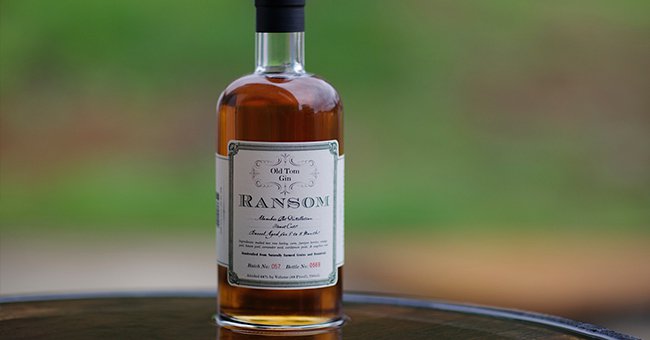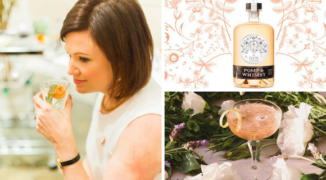Aged or new. Malty or crisp. Sweet or sharp.
When it comes to crafting a classic spirit that essentially vanished from America’s cocktail scene, interpretation was the key to innovation when distilleries took up Old Tom gin’s flag.
If Genever is the heady forefather of modern gin and London Dry is the modern standard bearer, Old Tom is the neglected middle child. Not as malty and heavy-handed as Genever. Not as spicy and arid as London Dry. Often sweeter and rounder than your more modern gins, Old Tom gin offers a great introduction to a somewhat divisive spirit.
So here’s the muddied history — and three spirited winter cocktails.
What is Old Tom Gin?
Old Tom Gin is a sweeter, less-botanical version of most gins found on the market today. It was the lynchpin of countless classic cocktails, and was the go-to spirit of the titans of classic mixology. The Professor Jerry Thomas himself routinely called for it throughout his seminal “How to Mix Drinks, or The Bon-Vivant’s Companion.”
So what happened to the former king of the gin hill? Like a lot of classic spirits that are no longer with us, Prohibition is what happened. While London Dry Gin had certainly started to dominate American palates prior to the 18th amendment, by the time it was repealed in 1933 the desire for Old Tom Gin was all but gone. By the mid 1950s, Old Tom had completely disappeared from back bars, fully supplanted by its uppity descendent.
Then, with the resurgence of the modern craft cocktail movement, more and more professional and home mixologists began to search for Old Tom.
Smash-cut to 2006, when Ransom Spirits founder and distiller Tad Seestedt sat down for lunch with longtime friend and cocktail historian David Wondrich.
“Prior to that lunch, we’d pretty much just been focusing on brandies and eau de vies,” Seestedt said. “I’d been thinking about trying my hand at a gin for while, and that was when David suggested an Old Tom.”
Up until that meeting, Seestedt hadn’t even heard of Old Tom, much less made an attempt at distilling it. However, Wondrich quickly convinced Seestedt of the merits of resurrecting the lost spirit. Relying heavily on Wondrich’s famous research skills, Seestedt began what would be a two-year process to Ransom’s Old Tom offering. Ransom would distill a batch, send it Wondrich, then go back the drawing board.
Concurrently, Hayman Distillers in the UK dusted off a family recipe for Old Tom Gin hailing from 1870. Hayman’s hit the market in 2007. Ransom hit the market late 2008. And the definition of Old Tom Gin became even more vague.
You see, Hayman’s Old Tom is clear. Ransom’s Old Tom is a light hay, like a young whiskey. Ransom’s Old Tom features malted barley with a relatively simplistic botanical infusion (juniper, orange and lemon peel, coriander, angelica root and cardamom). Hayman’s has a similar juniper-forward nose, but softens into a denser, fuller flavor.
Noticeably, Hayman’s Old Tom is distinctly sweeter, seeing as they add sugar. Ransom does not. Ransom is aged in wine barrels (hence the hue). Hayman’s is not.
And while it’s not uncommon for Old Tom gins to be aged, it’s not necessary. And while it’s not uncommon for Old Tom Gins to have sugar added, it’s not necessary. Hence the head-scratching.
“The idea behind aging the gin is that we wanted to re-create what would have happened 150 years ago,” Seestedt said. “Generally, spirits weren’t immediately bottled like they are today. Any time the gin would have been shipped it would have been kept in cooperage for some amount of time.”
The end result is that the two main players with modern Old Tom Gin have two very different properties. And while dozens of Old Tom Gins have entered the market in the several years since Hayman’s and Ransom forged the pathway, they’re just as diverse.
So, what’s in a name?
The true history of the Old Tom moniker is lost to the ages, unfortunately.
In his 1937 book “Famous New Orleans Drinks and How to Mix ‘Em,” Stanley Clisby Arthur claims the name comes from England when an old tom cat fell into a vat of gin. Distiller Joseph Boord claimed the name came from a man named Tom who had put in a good many years at Boord’s distillery.
The prevailing theory, however, is that Old Tom gin got its name from the wooden plaques shaped like “Old Tom” black cats that adorned the outside wall of pubs in 18th Century England.
History has it that drinking establishments across London hung signs depicting the eponymous old tom cat in the window of their establishment. Underneath the cat’s paw was a slot and a lead pipe, which was attached to a funnel inside the building. As they strolled down dusty England streets, thirsty patrons could drop a coin into the slot and receive a quick quaff of gin.
No matter the origin of the name, or even the confusion of what exactly constitutes an Old Tom Gin, the handful of Old Tom Gins entering the market are giving rise to a new wave of cocktails based on the classics. With its softer palate and more accessible flavors, this variation of gin is sure to continue its market growth for the next few years.
Welcoming 2018 with Old Tom Gins
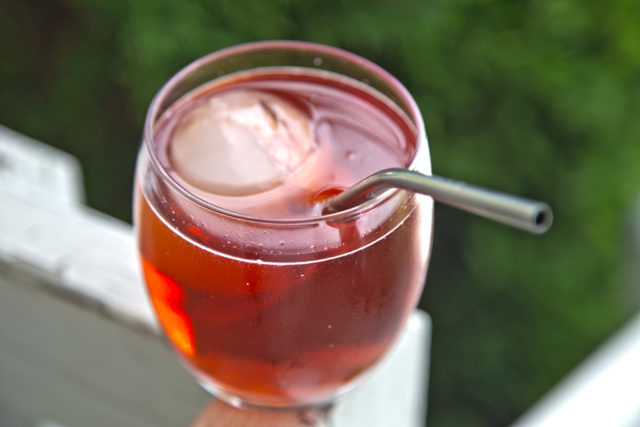
Rothko No. 1
This Negroni-inspired cocktail becomes much velvetier and soft when you switch out to an Old Tom Gin. The aged Ransom layers some oak on the back end, but pushes back from the edge of heavy with the addition of citrus and tonic water.
INGREDIENTS
- 2 ounces Ransom Old Tom Gin
- 2 ounces Carpano Antica Formula Sweet Vermouth
- 2 ounces Campari
- 1 lemon peel
- Fever Tree tonic water
DIRECTIONS
In a rocks glass, add the Ransom, vermouth, and Campari. Stir well and fill the rocks glass with ice. Top with the tonic water, then gently stir. Twist the lemon over the top and serve.
This Negroni-inspired cocktail becomes much velvetier and soft when you switch out to an Old Tom Gin. The aged Ransom layers some oak on the back end, but pushes back from the edge of heavy with the addition of citrus and tonic water.
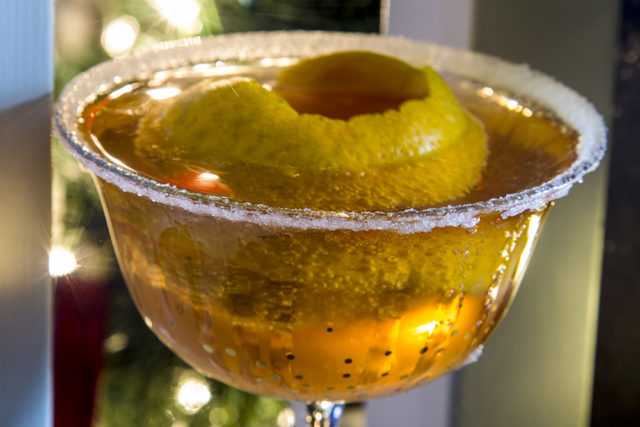
TBD Crusta
A cocktail by Mark A. Vierthaler, inspired by the classic Gin Crusta.
INGREDIENTS
- 2 ounces Hayman’s Old Tom Gin
- 2 dashes Fee Brother’s Barrel Aged Bitters
- .25 ounce St. Germaine Elderflower Liqueur
- 1 thick orange peel
- Spumante champagne to top
DIRECTIONS
Rim a champagne coupe with sugar. Thickly peel an orange so it surrounds the entire inside of the champagne coupe.
Place the Hayman’s, bitters, and elderflower liqueur in a cocktail shaker. Fill the shaker with ice then stir thoroughly until a nice frost builds on the outside of the shaker. Strain into the prepared champagne coupe. Top with with the Spumante.
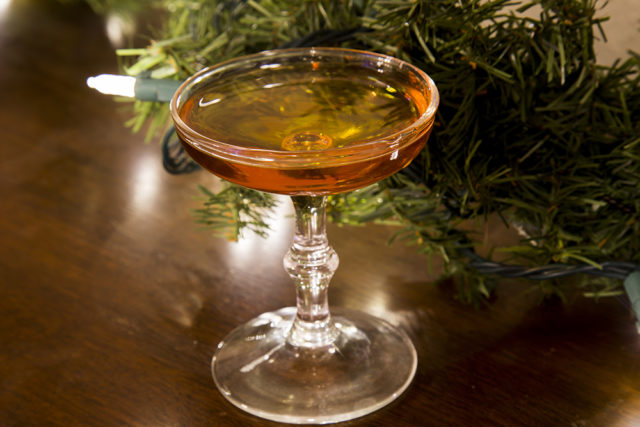
Tried and True
An Old Tom cocktail with herbaceous Becherovka, from Art Tierce at Ransom Spirits.
INGREDIENTS
- 1.5 ounces Ransom Old Tom Gin
- .75 ounce Ransom Dry Vermouth
- .5 ounce Becherovka
- .25 ounce Benedictine
- 1 dash orange bitters
DIRECTIONS
Mix all ingredients into mixing glass, add ice and stir. Strain into chilled coupe glass, and garnish with one whole star anise.


